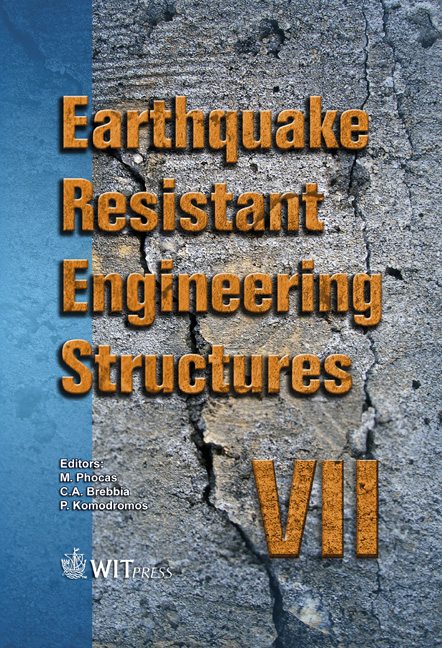Optimum Design Of Tuned Mass Damper Systems For Seismic Structures
Price
Free (open access)
Transaction
Volume
104
Pages
10
Page Range
175 - 184
Published
2009
Size
484 kb
Paper DOI
10.2495/ERES090161
Copyright
WIT Press
Author(s)
I. Abdulsalam, M. Al-Janabi & M. G. Al-Taweel
Abstract
Tuned mass dampers are well known devices for the passive control of vibrations in buildings subjected to earthquake loadings. Various methods have been proposed for the design of tuned mass damper (TMD) systems. In the present work, a method is suggested for obtaining the values of the parameters required for designing an efficient TMD system when attached to a SDOF system. In this method, the values of the optimum frequency ratio and optimum damping ratio for the TMD system are defined as the values that will reduce the maximum displacement of the structure to a minimum value when subjected to a specific earthquake time-acceleration history. For this purpose, a MATLAB computer program is developed. The program consists of a dynamic analysis subroutine embedded in a nonlinear constrained optimization program. The suggested method is used in selected case studies showing its efficiency when compared to other methods for designing TMD systems attached to SDOF systems. Keywords: tuned mass damper, control of structures, optimum design, earthquake time-history, optimum design. 1 Introduction The tuned mass damper (TMD) system represents an important type of passive control devices of structures subjected to dynamic loads. It can be installed to new or existing structures to improve their resistance to earthquakes and winds. A TMD system consists of a mass, a spring and a damper. If these properties are properly designed and selected, then the TMD device can be effective in suppressing undesirable vibrations induced by earthquake or wind loads.
Keywords
tuned mass damper, control of structures, optimum design, earthquake time-history, optimum design.





